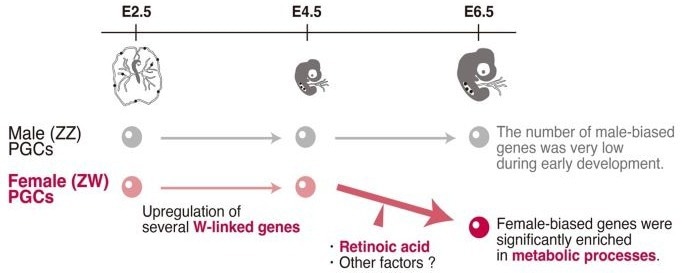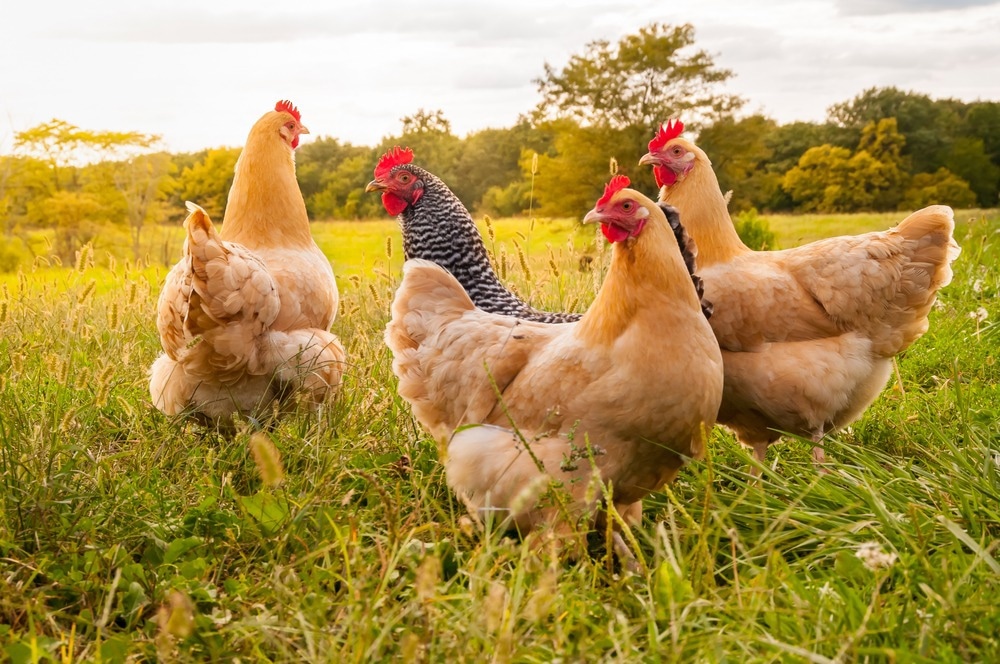Reviewed by Danielle Ellis, B.Sc.Sep 12 2022
Scientists have long known that in vertebrates, sex is determined by both the somatic and germ cells, which are the body’s non-reproductive cells. They still do not fully comprehend the mechanisms involved, though.
 Female-specific potential processes and pathways were identified in chicken primordial germ cells (PGCs) derived from early embryos. Image Credit: Kennosuke Ichikawa/Genome Editing Innovation Center
Female-specific potential processes and pathways were identified in chicken primordial germ cells (PGCs) derived from early embryos. Image Credit: Kennosuke Ichikawa/Genome Editing Innovation Center
A study team has examined chicken germ cells using RNA-sequencing to anticipate the mechanism that determines the sex to better understand the process of the sex determination in the germ cell. Their research sheds light on how birds determine their sex.
On August 17th, 2022, the study team from Hiroshima University published their findings in the Nature journal Scientific Reports.
While previous studies have demonstrated that chicken primordial germ cells possess a characteristic feature in sex determination, its mechanism remains unclear. To solve this challenge, we revealed gene expression profiles of male and female primordial germ cells derived from early chick embryos and then predicted the sex determination mechanism.”
Kennosuke Ichikawa, Postdoctoral Researcher, Genome Editing Innovation Center, Hiroshima University
This study is the first to anticipate the sex-determination mechanism utilizing a stimulation test and comparing the gene expression profiles of avian primordial germ cells at various developmental stages.
The techniques used by birds to determine their sex are distinct from those used by mammals. The Y-chromosome controls how sex is determined in mammals, which have a XX (female)—XY (male) sex chromosomal system. The Z chromosome controls sex in birds, which have a ZZ chromosome system for males and ZW chromosomes for females.

Image Credit: Moonborne/Shutterstock.com
However, it is still unknown how sex is determined at the molecular level. Cell autonomy is at least partially present during the development of various sexual characteristics as well as the reproductive glands known as gonads, which can develop into ovaries or testes. The study of the sex-determination in birds by the researchers sheds light on the evolution of sex-determination in vertebrates.
The scientists used fluorescence-activated cell sorting to separate male and female primordial germ cells from the blood and gonads to study the mechanisms underpinning sex determination in avian germ cells. They were able to obtain a purity of more than 96% with this approach.
Using RNA-sequencing analysis, in which the amount and sequences of RNA in a sample are examined using next-generation sequencing, they were able to determine the gene expression profiles of the primordial germ cells at each embryonic stage for each sex.
The researchers then employed bioinformatic analysis, which makes use of computer tools to comprehend biological data to anticipate the sex-determination mechanism of the primordial germ cells. They used retinoic acid to stimulate male primordial germ cells in vitro, and then they looked at the variations in gene expression to assess the prediction.
The female circulating primordial germ cells isolated from blood had sex-biased expression prior to settling in the gonads. The primordial germ cells from the gonads also had sex-biased expression, and more female-biased genes than male-biased genes were found.
The researchers discovered that some metabolic pathways in the primordial germ cells were enriched for the female-biased genes. The researchers carried out stimulation tests to identify the processes underlying this process.
The team stimulated the cultured primordial germ cells obtained from male embryos using retinoic acid. Several female-biased genes were upregulated as a result of this stimulation, which is the process where a cell’s components grow.
Overall, their findings imply that parts of both cell-autonomous and somatic-cell control are involved in determining sex in avian primordial germ cells. Additionally, it seems that females determine their sex earlier than males do.
Ichikawa added, “We successfully predicted female-specific potential processes and pathways in chicken primordial germ cells. We believe our data set can significantly contribute to elucidating the avian sex determination mechanism.”
The team intends to use the data set to pinpoint the crucial chemicals directly causing the feminization of chicken primordial germ cells in their future projects.
“The ultimate goal of this study is to elucidate the sex determination mechanism and then establish a sex selection method in chickens using genome editing targeting the key molecules,” Ichikawa concluded.
Source:
Journal reference:
Ichikawa, K., et al (2022) Prediction of sex-determination mechanisms in avian primordial germ cells using RNA-seq analysis. Scientific Reports. doi:10.1038/s41598-022-17726-7